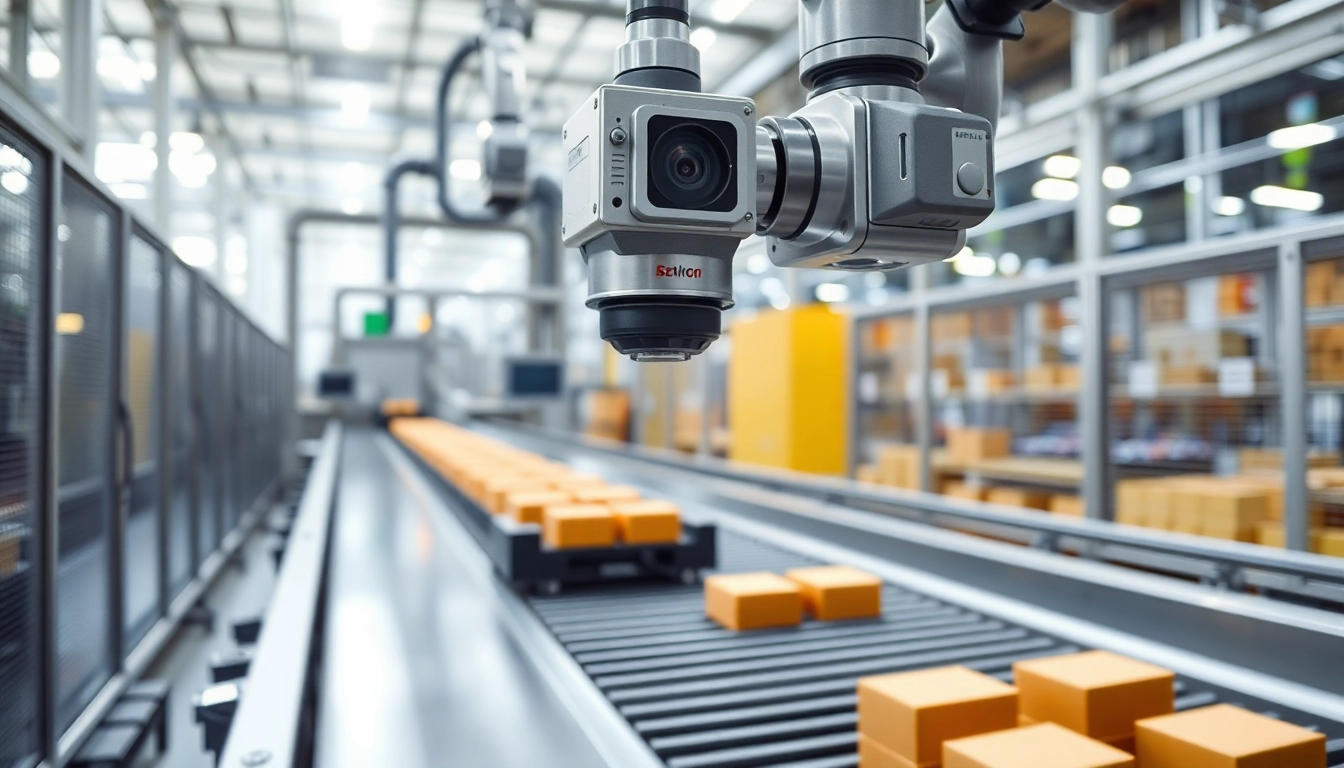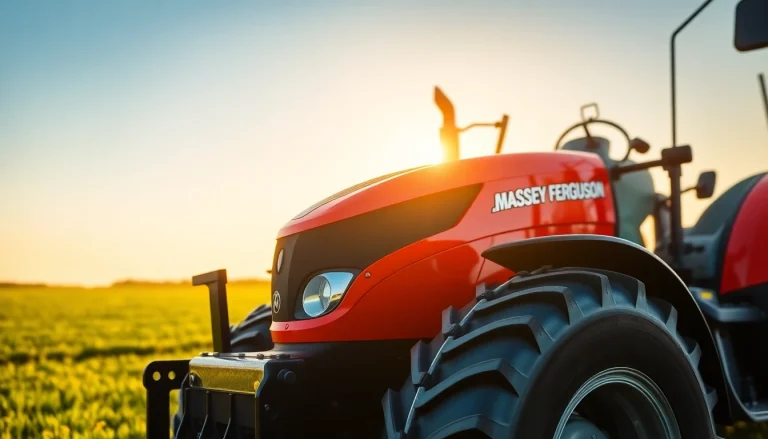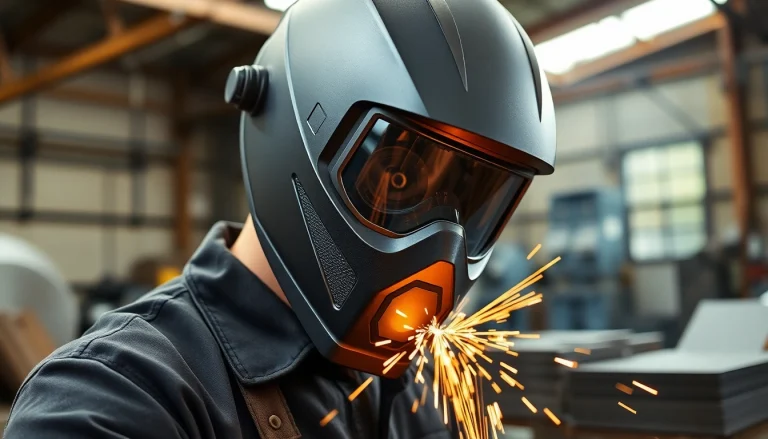
What is Machine Vision?
Definition and Overview of Machine Vision
Machine vision is a technological field that empowers systems to interpret data from images, effectively granting machines the capability to “see” and make decisions based on visual information. Machine vision encompasses a wide array of processes, including capturing images, processing visual data, and using sophisticated algorithms to draw insights from those images. This technology plays a vital role in industries ranging from manufacturing to healthcare, where precise visual assessments are crucial for quality assurance and operational efficiency.
How Machine Vision Works: The Technology Behind It
The foundational structure of machine vision revolves around several key components: cameras, lighting, hardware, and software. Initially, a camera captures the visual data of a scene or object. This image is then converted from an analog signal to a digital format using an analog-to-digital converter (ADC). Following this, the digital image undergoes processing via computational algorithms. These algorithms can include image enhancement techniques, pattern recognition, and even artificial intelligence (AI) methodologies that refine the interpretation of images for actionable insights.
Moreover, the illumination of the subject is essential; proper lighting techniques, including backlighting and front lighting, are employed to enhance image clarity and contrast, ensuring that the data extracted is as accurate as possible.
Key Applications of Machine Vision in Industry
Machine vision technologies have found numerous applications across various sectors. Some of the prominent uses include:
- Quality Control: Machine vision systems are employed to inspect products on assembly lines, detecting defects or deviations in real-time to maintain product quality standards.
- Automated Inspection: This technology automates routine inspections, significantly reducing human error while enhancing speed and accuracy.
- Barcode and QR Code Recognition: Machine vision systems facilitate quick data capture from barcode and QR code scanning, enabling efficient inventory management.
- Part Alignment and Identification: In applications such as robotics, machine vision assists in identifying and aligning parts for assembly with a high degree of precision.
- Medical Imaging: In healthcare, machine vision aids in the analysis of medical imagery for diagnostics and treatment planning.
The Importance of Machine Vision Systems in Automation
Enhancing Quality Control with Machine Vision
Quality control is a critical concern in many industries, and machine vision significantly enhances this aspect by providing precise, unbiased assessments of products. Through automated inspections, organizations can detect defects at a rate much higher than manual processes, allowing them to maintain consistent quality across production lines. For example, in the semiconductor industry, machine vision can identify microscopic flaws that would be invisible to the human eye, thus preserving the integrity of the final product.
Cost Savings and Efficiency Improvements
Implementing machine vision systems can yield substantial cost savings for businesses. By reducing the incidence of human error and accelerating the pace of inspections, companies can increase their throughput while minimizing waste. Studies indicate that organizations employing machine vision can see reductions in rework and scrap rates by 20-30%. Moreover, continuous monitoring and reporting capabilities offer firms the chance to optimize their processes further, leading to greater overall efficiency.
Integration with Other Technologies
The versatility of machine vision systems allows for seamless integration with other technologies, such as robotics and artificial intelligence. Collaborative robots equipped with vision can perform complex tasks, such as assembling components or packaging products, with enhanced precision and reliability. Further, when integrated with AI-enabled data analytics platforms, machine vision systems can learn from historical data to improve their detection algorithms over time, creating a continuous improvement loop.
Types of Machine Vision Systems
1D, 2D, and 3D Machine Vision Systems Explained
Machine vision systems are categorized primarily into three types: 1D, 2D, and 3D.
- 1D Machine Vision Systems: These systems typically measure or analyze linear features. They are often utilized in barcode reading and basic measurement applications.
- 2D Machine Vision Systems: As the most common type, 2D systems capture images and analyze them for pattern recognition, defects, or gauging. They rely on cameras and are widely used in quality control processes.
- 3D Machine Vision Systems: These systems utilize multiple cameras and advanced algorithms to create three-dimensional representations of objects. This allows for detailed analysis of form and volume, crucial in applications such as robotic pick-and-place operations and complex assembly tasks.
Choosing the Right Machine Vision System for Your Needs
Selecting the appropriate machine vision system for any given application requires careful consideration of various factors, including the specific requirements of the task, the types of objects being inspected, and the speed at which inspections must occur. For instance, in high-volume environments, faster systems with higher resolutions may be needed to keep up with production demands. Conversely, industries requiring high precision in their measurements may prioritize systems equipped with advanced optical sensors.
Common Technologies Used in Machine Vision Systems
Machine vision systems employ numerous technologies, including:
- Digital Cameras: High-resolution cameras are vital for capturing clear images necessary for accurate analysis.
- Lighting Solutions: Various lighting techniques, such as LED and fiber optic lighting, enhance image quality by reducing shadows and reflections.
- Image Processing Software: Advanced algorithms analyze captured images for features like edges, colors, and shapes to facilitate accurate decision-making.
- Control Systems: Computers and processors manage the overall operation of machine vision systems, conducting real-time data processing for prompt results.
Challenges and Solutions in Machine Vision Implementation
Common Issues in Machine Vision Systems
While machine vision offers significant benefits, organizations may encounter challenges during implementation:
- Calibration Issues: Systems may require precise calibration to achieve optimal performance, and deviations can lead to inaccurate results.
- Environmental Conditions: Variations in lighting, dust, and other environmental factors can affect image quality and system performance.
- Complexity of Images: Some systems struggle with complex images or those with significant variability, leading to errors in interpretation.
Best Practices for Successful Integration
To mitigate these challenges, organizations can adopt several best practices:
- Ensure proper training for operators who will work with the systems to facilitate correct usage and maintenance.
- Regularly conduct calibration checks to maintain accuracy, particularly in dynamic environments where conditions change frequently.
- Utilize advanced imaging techniques and lighting solutions to adapt to different environments and product types.
Future Trends in Machine Vision Technology
The machine vision industry is witnessing rapid advancements and trends that are likely to shape its future:
- Increased Use of AI: More machine vision systems will leverage AI and machine learning to enhance decision-making capabilities, improving accuracy and functionality.
- Edge Computing: Processing data closer to the source can decrease latency and improve response times for real-time applications.
- Integration with IoT: As machine vision becomes more interconnected with IoT devices, systems will gain even greater insight and control over manufacturing processes.
Measuring Performance and ROI of Machine Vision Solutions
Key Performance Indicators for Machine Vision
When evaluating the effectiveness of machine vision systems, organizations should establish clear metrics. Key Performance Indicators (KPIs) include:
- Defect Rate: Measuring the rate at which defects are detected after implementing machine vision.
- Throughput: Assessing how many items are inspected or processed within a given timeframe.
- Error Rate: Monitoring the frequency of false positives and false negatives in inspections.
- Return on Investment (ROI): Evaluating the overall financial return from implementing machine vision compared to the initial investment.
Case Studies Demonstrating Successful Machine Vision Implementations
Numerous companies have successfully employed machine vision systems, leading to enhanced efficiency and reduced defects. For instance, a leading automotive manufacturer implemented machine vision for quality control checks on components. This resulted in a reduction of defects by over 40%, translating into significant cost savings and improved customer satisfaction. Such case studies serve to illuminate the tangible benefits machine vision can provide across various sectors.
Evaluating the Return on Investment for Machine Vision Projects
Calculating the return on investment for machine vision projects involves considering both direct and indirect benefits. Direct benefits can include savings from reduced labor costs and lower defect rates, while indirect benefits could encompass improved customer trust and brand loyalty resulting from higher quality standards. Businesses typically determine ROI by comparing the cost of implementation (including equipment, training, and maintenance) against the financial gains realized through enhanced operational efficiency and defect reduction over time.






